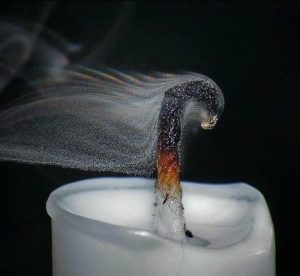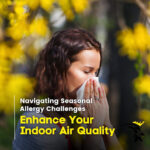Smoke is a complex mixture of toxic gases and tiny bits of matter, called particulate matter. The Environmental Protection Agency warns of the dangers of particulate pollution. EPA AIRNOW
“Particle pollution is a mixture of microscopic solids and liquid droplets suspended in air. This pollution, also known as particulate matter, is made up of a number of components, including acids (such as nitrates and sulfates), organic chemicals, metals, soil or dust particles, and allergens (such as fragments of pollen or mold spores).
“The size of particles is directly linked to their potential for causing health problems. Small particles less than 10 micrometers in diameter pose the greatest problems, because they can get deep into your lungs, and some may even get into your bloodstream. Exposure to such particles can affect both your lungs and your heart. Larger particles are of less concern, although they can irritate your eyes, nose, and throat.
“Small particles of concern include ‘fine particles’ (such as those found in smoke and haze), which are 2.5 micrometers in diameter or less; and ‘coarse particles’ (such as those found in wind‐blown dust), which have diameters between 2.5 and 10 micrometers.”
Smoke contains particle signatures from it’s source as it’s a result of incomplete combustion, identified as soot. House fires, forest fires, brush fires, fireplace smoke, industrial fires, cigarettes, kitchen fires, candles etc. all leave behind a toxic signature. Simply put… the particle size of smoke soot can present a respiratory hazard.
A typical structure fire may generate literally tens of thousands of toxic chemicals and VOC gases as a variety of materials and products are burned. Research on candles has identified over 300 toxic gases and cigarette smoke over 7,000 toxic chemicals, with 70 identified as cancer causing, even with brief exposure.
These microscopic particles get trapped in the lungs and cause a wide range of health problems. Studied have barely scratched the surface to determine all the adverse effects that may result when different products are burned. Plastics, foams, textiles, carpets, wool, synthetic fabrics, wood products, treated lumber, plywood, electronics, household chemicals, and the list goes on.
Exposure to smoke toxins can be far more hazardous to human health than mold, asbestos, lead, or other contaminants. Respiratory ailments, cardiac hazards, and cancers connected with exposures to a nearby environmental fire are far greater than those from the past, mainly because the materials used today to manufacture products and their chemical composition have changed dramatically.
Research has also shown that many premature deaths are directly related to soot in the environment. Particle exposure leads to around 20,000 premature deaths in America each year. Data also shows that soot annually causes almost 300,000 asthma attacks and 2 million lost workdays due to respiratory problems. (1)
The toxic mixture of chemicals and gases contained in fire smoke is comprised primarily of
- carbon monoxide
- carbon dioxide
- hydrogen cyanide
- ammonia
- hydrogen chloride
- sulfur dioxide
- hydrogen sulfide
- Acids
- and oxides of nitrogen.
Other toxins may include
- acetylene
- methyl mercaptan
- ammonia
- nitric oxide
- carbon disulfide
- Creosote
- nitrogen dioxide
- dimethyl sulfide
- Phosphine
- Ethylene
- Benzene
- methylene chloride
- Lead
- chromium
- and other metals
- Trichloroethylene
- Toluene
- Trichlorophenol
- fluorine, acrolein
- Mercury
- Formaldehyde
- Glutaraldehyde
- Benzaldehyde
- sulfuric acid
- hydrochloric acid
- arsenic
- Chromate
- Phenol
- Styrene
- polycyclic aromatic hydrocarbons
- and the list goes on.
In fact, the entire spectrum of potentially toxic combustion products from fires is endless. Even short-term exposure to fine particulates has been associated with triggering nausea, headaches, disturbed equilibrium, skin and eye irritation, heart attacks, asthma, chronic bronchitis and death.
Are you and your family filtering these toxic smoke particles and gases out of your home with a proper indoor air quality system or with your lungs? A polarized media air cleaner is excellent whole home particle control. Magnetically attracts particles from 200 – .3 microns in size and electroplates them to the media filter, that way they cant be released back into the air you breathe. Lion Home Service has budget conscious options to ensure a whole home indoor air quality solution that includes cleaning sub micron particles, biological pollutants such as viruses and mold as well as VOC gas contaminates.
We serve Fort Collins, Loveland, Greeley, Longmont, Boulder, Brighton, and surrounding areas with all indoor air quality solutions. Call today 970-399-9940.
(1) Industrial Hygiene – What is Soot and Why is it Dangerous? http://blog.cashins.com/blog0/bid/191511/Industrial-Hygiene-What-is-Soot-and-Why-is-it-Dangerous Posted by Zachary Keefe









